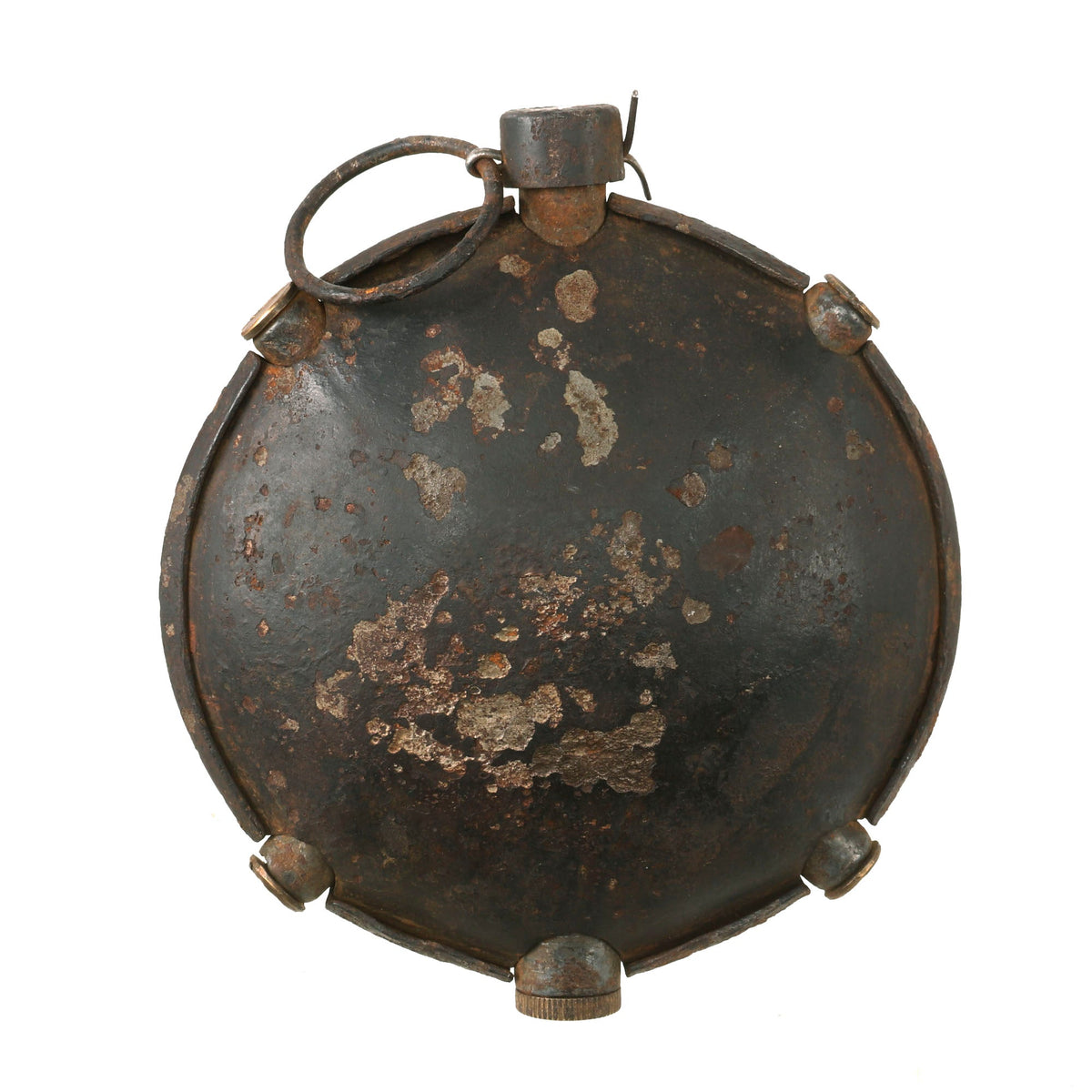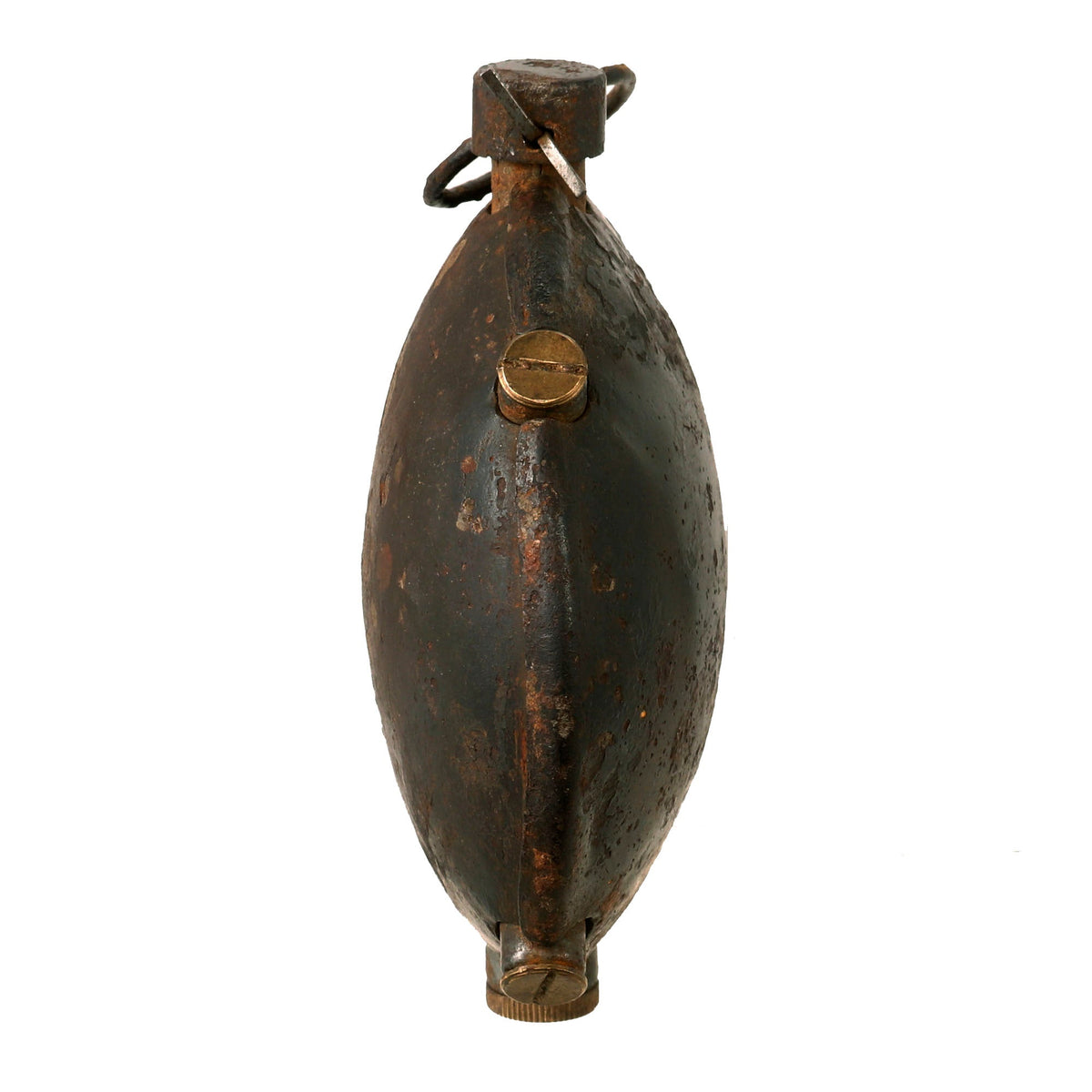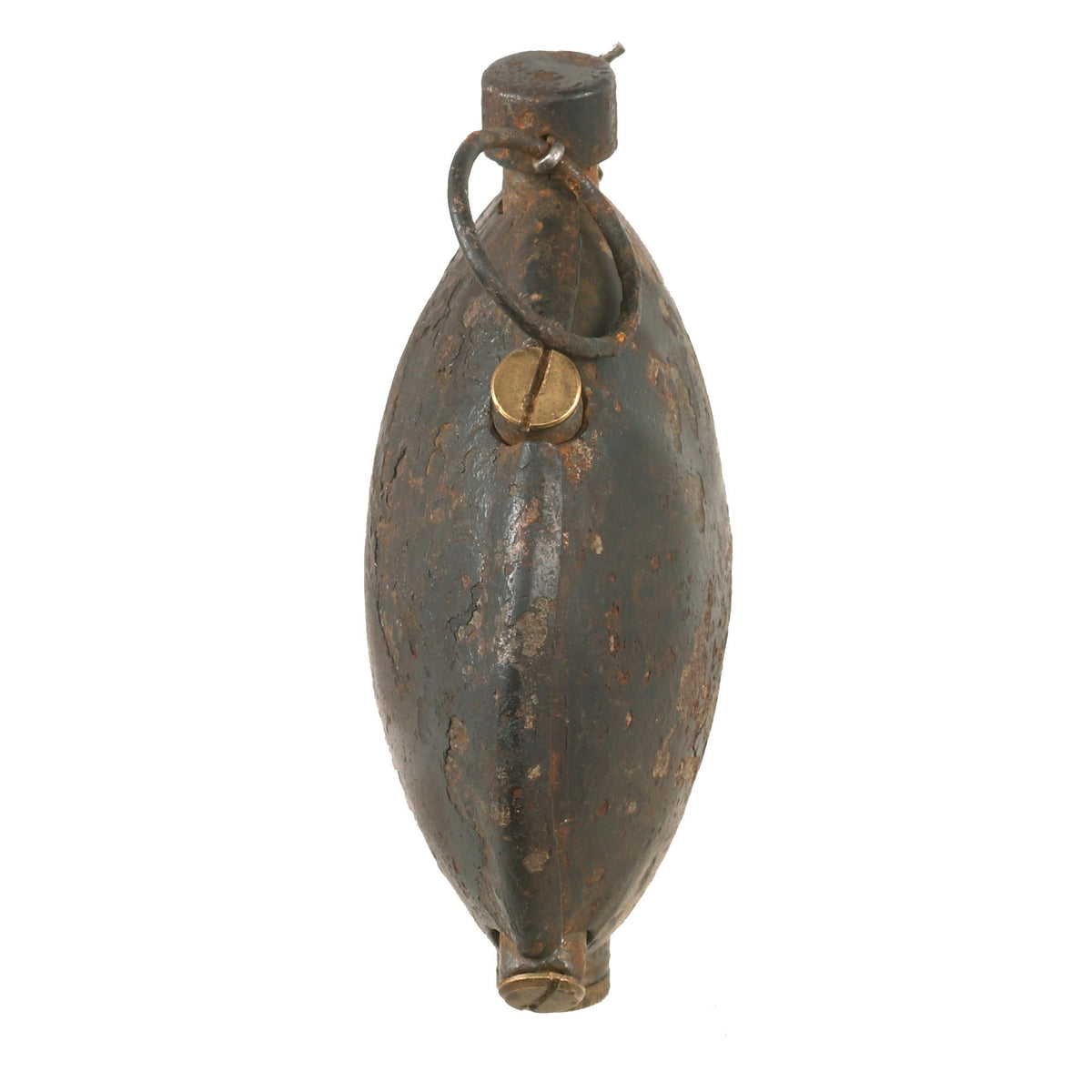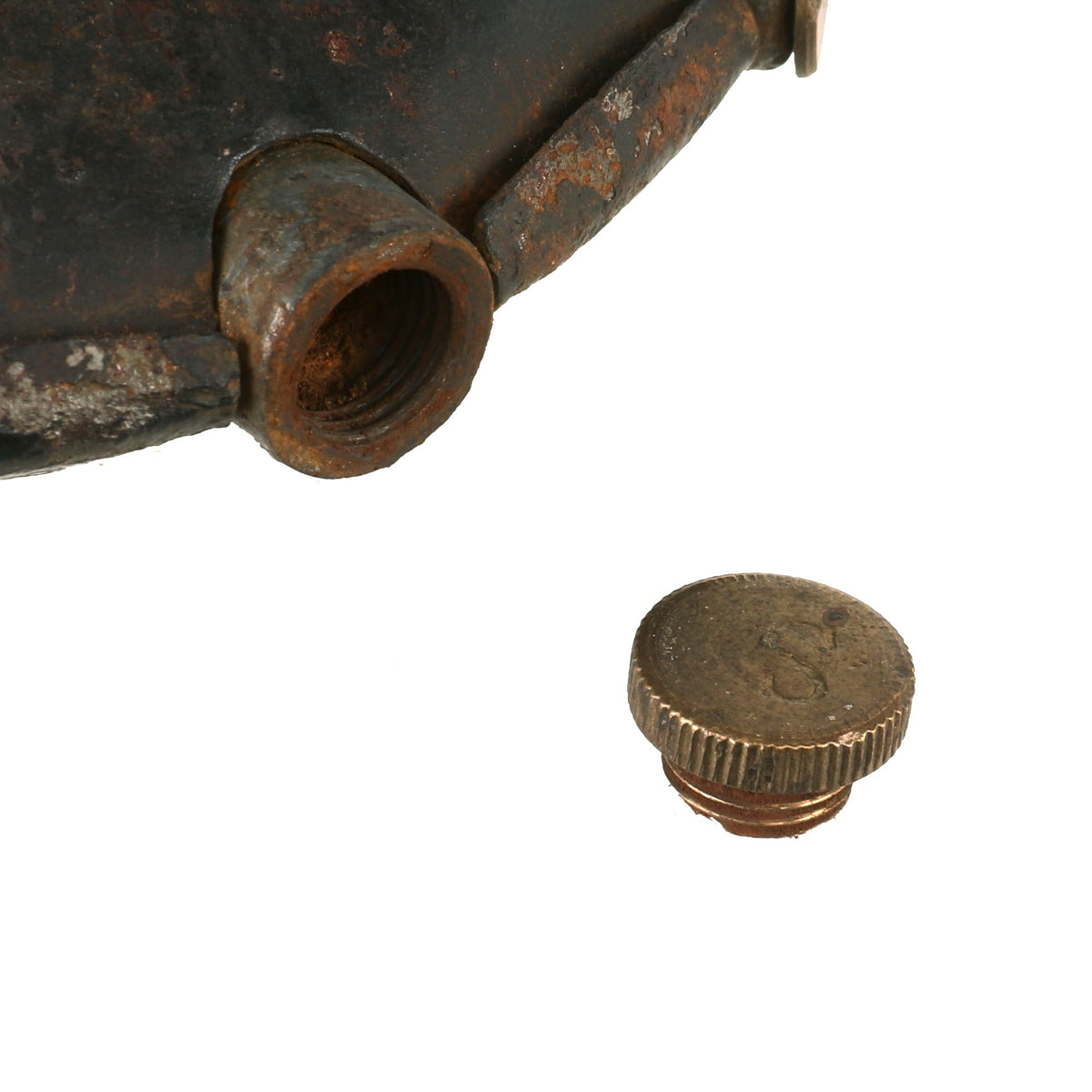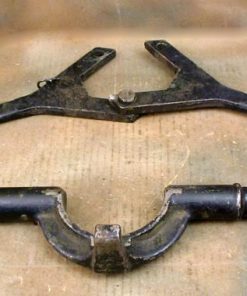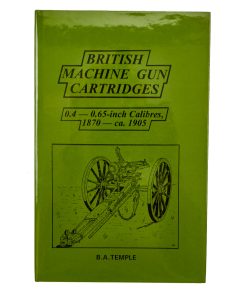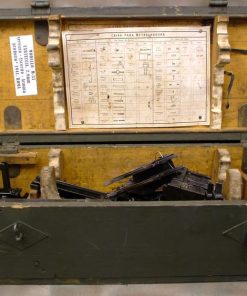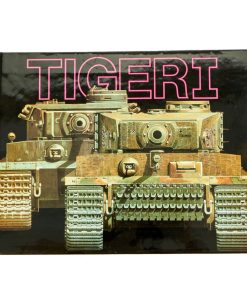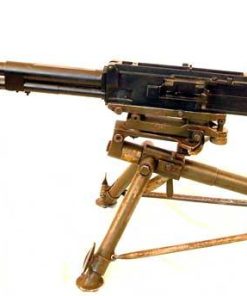Original German WWI Model 1915 Inert “Turtle” Offensive Discus Hand Grenade – Discushandgranate Original Items
$ 595,00 $ 178,50
Original Item: Only One Available. Totally inert and demilitarized according to BATF guidelines with hollow body and inert fuse. This grenade cannot be converted to an explosive device and is not available for export.
Offered is this very rare World War I German offensive discus grenade, the Discushandgranate Model 1915. This example is in good condition, with light oxidation and pitting on the body, which still has a lot of the original finish. It has three of the brass screw caps on the “legs” with one broken and completely missing, the brass cap for the detonator is intact as well. It even still has the original pull ring and cap that would arm the grenade!
Comes more than ready for further research and display.
The trench warfare of WWI reinforced the long expressed need for impact detonated grenades, which would give no opportunity for the enemy to throw it back, like a conventional ‘timed’ grenade. In Germany, an original and efficient answer was developed in 1915 with the ‘Discushandgranaten’ (called ‘turtle grenades’ by the allied soldiers). The offensive model was made with two thin steel plates, crimped together, and is approximately 4 1/2 inches in diameter. The “defensive” model was smaller, and made of two pre-fragmented steel plates.
These grenades have a lenticular “biconvex” shape, just like the discus thrown in Track & Field events.
Inside the grenade were two bags of explosive, and the grenades were equipped with an ingenious igniting system looking like a star with 6 hollow cast aluminum tubes. The ones making the “legs” of the turtle contain mobile inertia blocks containing igniters. At the center of this cross is a “star” with 4 percussion pins, oriented towards the inertia blocks starters.
The other two tubes were for the safety and the detonator, respectively. The safety tube had a brass tube inside it that covered the “star”, and was retained by a safety pin. The tube opposite it contained the detonator itself, which would be ignited by the percussion charge.
To use this grenade, one had to remove the safety pin, and then throw it like a discus, giving it the necessary spin for a level flight. The centrifugal force also pushed back the inertial blocks, as well as the brass tube that covered the ignition star. Once the grenade landed, one of the 4 blocks would fall onto the star, and detonate the grenade. It was not a perfect system, but definitely ingenious and interesting.
Fast Shipping with Professional Packaging
Thanks to our longstanding association with UPS FedEx DHL, and other major international carriers, we are able to provide a range of shipping options. Our warehouse staff is expertly trained and will wrap your products according to our exact and precise specifications. Prior to shipping, your goods will be thoroughly examined and securely secured. We ship to thousands clients each day across multiple countries. This shows how we're dedicated to be the largest retailer on the internet. Warehouses and distribution centres can be located throughout Europe as well as the USA.
Note: Orders with more than one item will be assigned a processing date depending on the item.
Before shipping before shipping, we'll conduct a thorough inspection of the items you have ordered. Today, the majority of orders will be delivered within 48 hours. The delivery time will be between 3-7 days.
Returns
The stock is dynamic and we cannot completely manage it because multiple stakeholders are involved, including our factory and warehouse. So the actual stock may alter at any time. It's possible that you may not receive your order once the order has been made.
Our policy is valid for a period of 30 days. If you don't receive the product within 30 days, we are not able to issue a refund or an exchange.
You can only return an item if it is unused and in the same state as the day you received it. You must have the item in its original packaging.
Related products
Uncategorized
Uncategorized
Uncategorized
Uncategorized
Uncategorized
Uncategorized
Uncategorized
Uncategorized
Angolan Rebel 1970s era 60mm Inert Display Mortar from Angolan Civil War Original Items
Uncategorized
Uncategorized
Band of Brothers ORIGINAL GERMAN WWII Le. F.H. 18 10.5cm ARTILLERY PIECE Original Items
Uncategorized
Uncategorized
